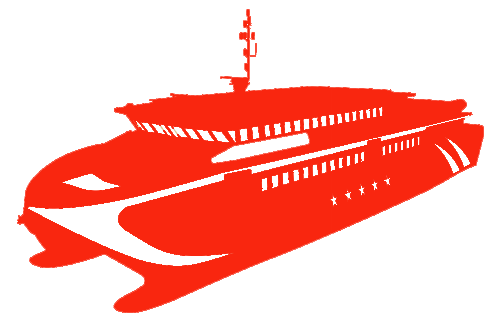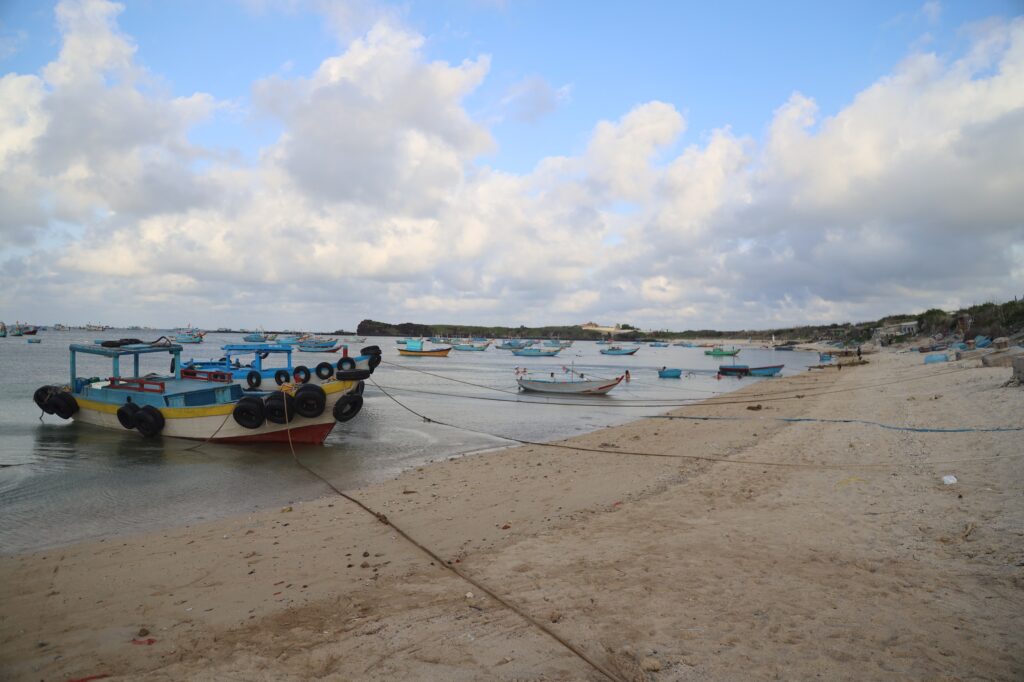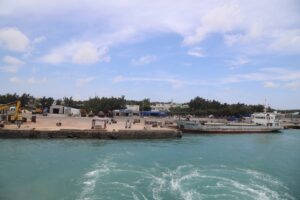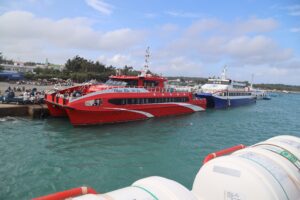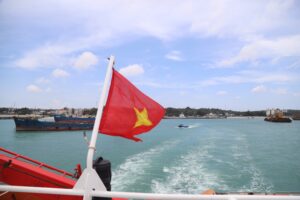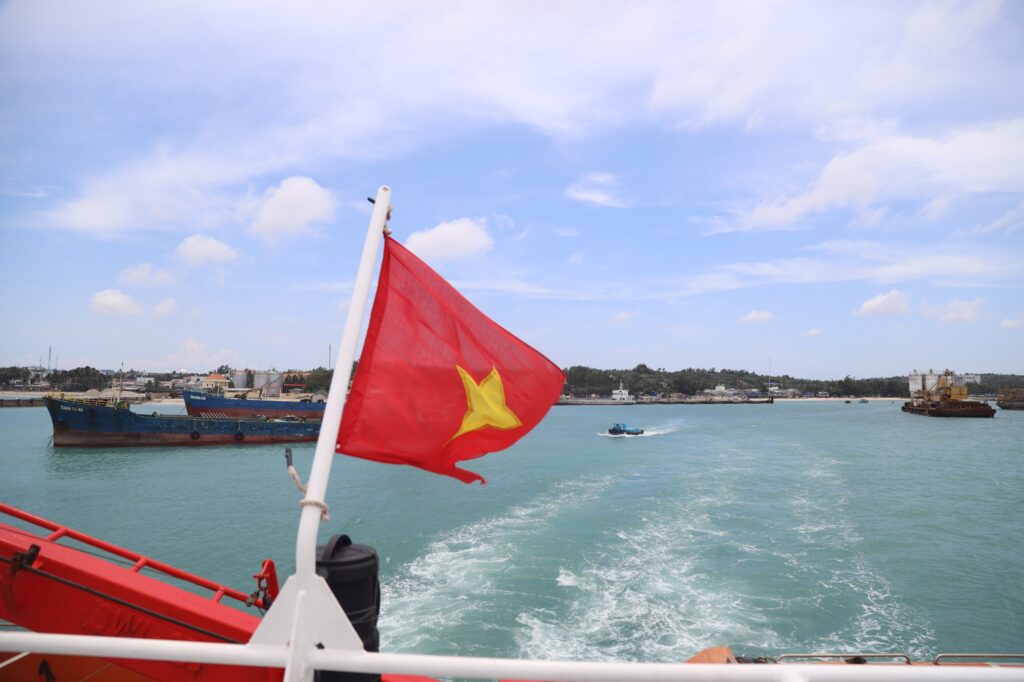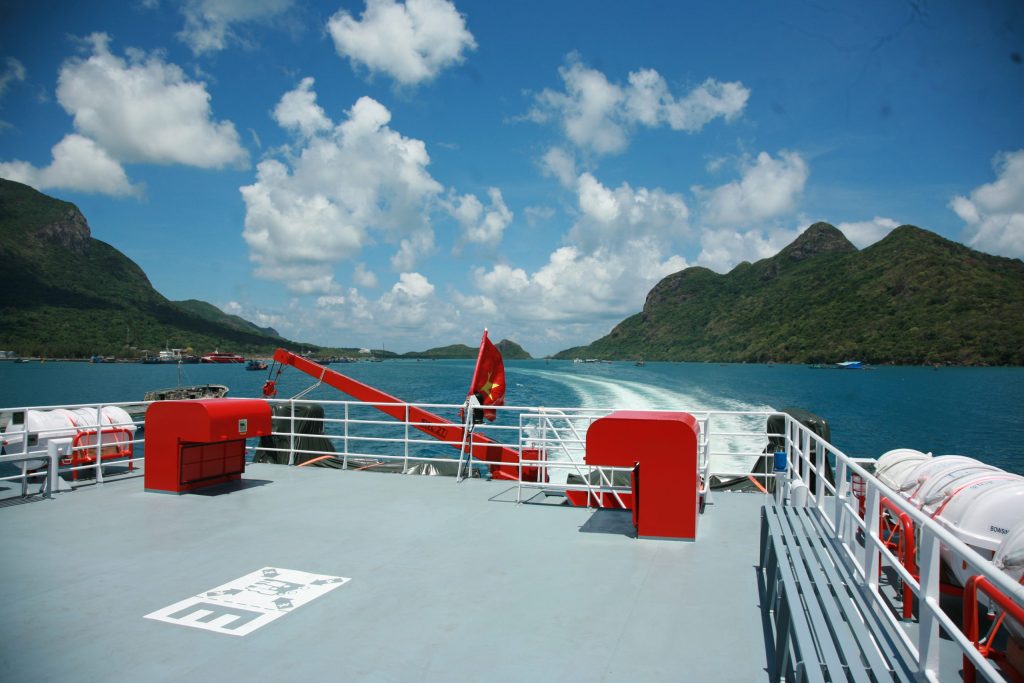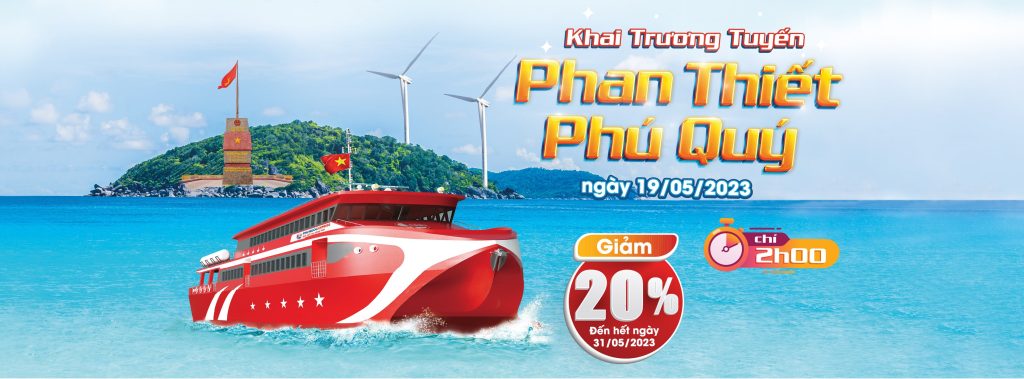Phu Quy is an island district of Binh Thuan Province, located offshore in the East Sea of Vietnam. It comprises a group of 12 large and small islands and serves as a strategic outpost of the country.
The district lies between latitudes 10°28’58’’ to 10°33’35’’ North and longitudes 108°55’13’’ to 108°5’12’’ East. It is approximately 120 km from the mainland city of Phan Thiet; 540 km west of the Truong Sa (Spratly) Archipelago; 150 km southeast of Cam Ranh (Khanh Hoa Province); 330 km northeast of Con Dao; and 200 km north of Vung Tau City.
Main Access Routes:
-
By road and rail:
-
Hanoi to Phan Thiet Port: ~1,650 km
-
Ho Chi Minh City to Phan Thiet Port: ~200 km
-
-
By air:
-
Noi Bai Airport (Hanoi) → Tan Son Nhat Airport (Ho Chi Minh City) → Phan Thiet Port → Phu Quy Island
-
Noi Bai Airport → Cam Ranh Airport (Nha Trang) → Phan Thiet Port → Phu Quy Island
-
-
By sea:
-
From Phan Thiet Port to Phu Quy Island:
-
Trung Trac high-speed ferry: ~2 hours 10 minutes
-
Superdong and Phu Quy Express high-speed ferries: ~2 hours 30 minutes
-
-
Phu Quy holds a strategically important position in both economic and defense terms. It lies on the route connecting the mainland to the Truong Sa Islands and is near international maritime shipping lanes—an advantage for tourism, trade, and maritime services.
Significance in Different Contexts
-
For the South Central Coastal Region:
Phu Quy is a critical outpost for national defense, overseeing vital southern maritime zones. It lies at the midpoint of one of Vietnam’s richest fishing grounds and is ideally positioned for international maritime services and tourism. The island is also one of 16 officially designated marine protected areas in Vietnam, playing a key role in biodiversity conservation. -
For Binh Thuan Province:
Phu Quy is a standout tourism destination with activities such as swimming, fishing, diving, and visiting historical sites and traditional fishing villages. Its proximity to international shipping routes and oil-rich continental shelves adds to its economic potential. The island forms part of both provincial and national tourism routes, such as Phan Thiet – Phu Quy and the Mekong Delta – Southeastern Region – Ho Chi Minh City – Phan Thiet – Phu Quy route. -
For Local Development:
Tourism is a vital economic sector for Phu Quy, creating jobs, generating income, and supporting local development. It contributes to other sectors via local tax revenue, supporting healthcare, education, utilities, and transportation. Tourism also plays a role in preserving natural and cultural heritage related to the sea and islands.
Overview of History and Development
Phu Quy Island was formed by volcanic activity millions of years ago. Its continental shelf is surrounded by coral reefs, with the deepest sea point at around 42 meters.
Historical records trace Phu Quy back to the Early Le Dynasty. Over time, its administrative status and affiliations have changed. The island has gone by various names: Cổ Long (Koh Rong), Cu Lao Khoai Xu, Thuan Tinh Island, Nine-Village Island, Hon Lon, Phu Quy, Cu Lao Thu, Poulo-Cécir-de-Mer, and simply “Hon” by locals.
Archaeological studies show that the island once belonged to the Sa Huynh Culture, transitioning into the Champa Culture. Tools like axes, bracelets, and burial items dating back 2,000–3,000 years have been found in Long Hai and Ngu Phung communes—particularly around Mount Cao Cat and Mount Cam. This indicates the presence of ancient inhabitants who lived by gathering and fishing.
When the Cham people inhabited the island, it was called Koh Rong. Later, Vietnamese settlers named it Co Long. While the Cham no longer reside on the island, relics and legends remain—such as the Temple of Princess Ban Tranh and Cham graves in Long Hai.
During the Trinh-Nguyen civil war (1627–1672), many coastal Central Vietnamese fled to the island. The Kinh people have long been present. In the 17th century, exiled Ming officials from China also settled here, integrating with the local population and engaging in silk weaving and trade. Some later moved inland, while others remained.
From 1738–1765, the Southern court organized the population into military units that later became hamlets and villages—up to 14 villages and 1 hamlet at one time. In 1886, the island had 11 villages; by 1930, only 9 remained. Today, Phu Quy has three communes: Long Hai, Ngu Phung, and Tam Thanh.
Historically, Phu Quy was a self-sustaining community engaged in farming, fishing, weaving, and rope-making—fishing being the primary activity.
On April 27, 1977, Phu Quy District was officially established by Government Decision No. 329-CP, including Long Hai, Ngu Phung, and Tam Thanh communes. After Thuận Hải Province split into Binh Thuan and Ninh Thuan in 1991, Phu Quy has been part of Binh Thuan.
Thus, for thousands of years, people have continuously inhabited Phu Quy—from the Sa Huynh culture to the Cham and then the Vietnamese. These communities—Kinh, Cham, and Chinese—coexisted and contributed to the island’s unique cultural identity. Today, cultural sites and architecture continue to reflect this heritage, drawing researchers and tourists alike.
Top Frequently Asked Questions About Phu Quy Island
1. Which province does Phu Quy Island belong to?
Phu Quy is an island district of Binh Thuan Province—the only and farthest offshore district of the province. It comprises three communes: Long Hai, Tam Thanh, and Ngu Phung, with Ngu Phung serving as the district center.
2. How far is Phu Quy from the mainland?
Phu Quy is located about 110 km (approximately 56 nautical miles) from Phan Thiet city on the mainland, 200 km east of Vung Tau, and 150 km south of Cam Ranh in Khanh Hoa Province. It is about 300 km from Ho Chi Minh City (186 km from HCMC to Phan Thiet, then ~110 km to the island).
3. How long does it take to get to Phu Quy by ferry?
There are several high-speed ferry options to reach Phu Quy, including:
-
Trung Trac: ~2 hours 10 minutes
-
Superdong Phu Quy I & II: ~2 hours 45 minutes
These durations are based on vessel design, technical performance, and actual passenger experiences. For updated ferry schedules, please check the FERRY TIMETABLE.
4. Ferry operators serving Phu Quy:
-
Phu Quoc Express Joint Stock Company – operator of the Trung Trac high-speed ferry.
-
Superdong Fast Ferry Joint Stock Company – operator of Superdong Phu Quy I and II.


